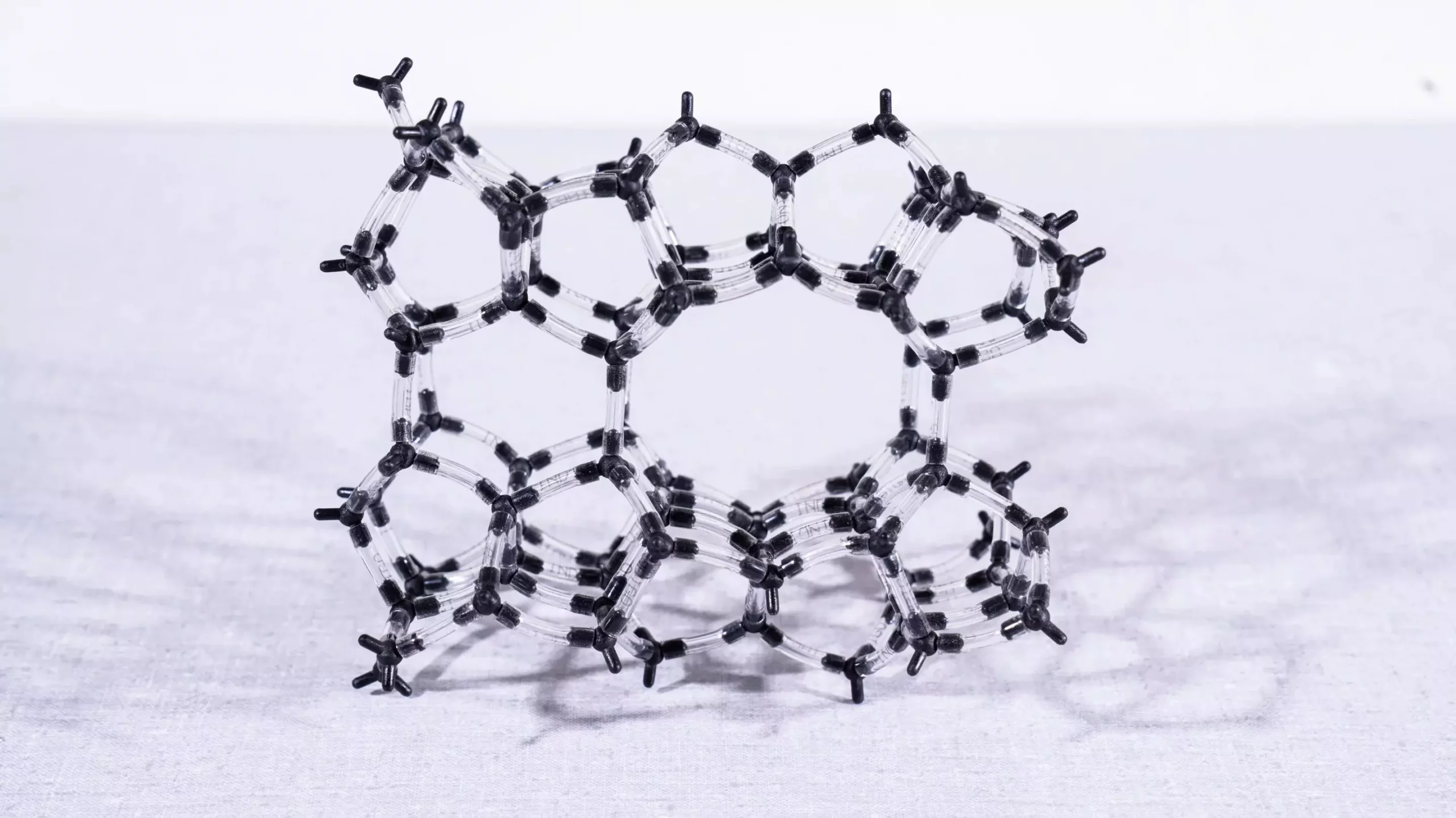Industrial processes are a significant source of nitrogen oxides (NOx), which include nitric oxide (NO) and nitrous oxide (N2O). These gases pose serious environmental and health risks, being key contributors to air pollution, acid rain, and climate change. Nitric oxide can convert into nitrogen dioxide, further exacerbating the formation of smog and respiratory ailments. Meanwhile, nitrous oxide, commonly known as laughing gas, is an even more potent greenhouse gas, with a warming potential nearly 300 times that of carbon dioxide. Given these dangers, reducing NOx emissions is critical for both public health and environmental sustainability.
Zeolites, a class of porous minerals composed primarily of silicon, aluminum, and oxygen, have become vital in the catalytic reduction of nitrogen oxides. These naturally occurring or synthetically produced materials serve as catalysts in various industrial applications, including the removal of harmful gases from emissions. Their unique nano-porous structure allows them to host metals such as iron, creating sites capable of facilitating chemical reactions efficiently. One of the remarkable aspects of zeolite-based catalysts is their ability to orchestrate the simultaneous conversion of nitric and nitrous oxide into harmless products, presenting a dual-faceted solution to an urgent environmental problem.
Recent investigations by researchers at the Paul Scherrer Institute (PSI), in collaboration with CASALE SA, have shed light on the intricate operations of zeolite catalysts. By employing advanced spectroscopic techniques, the team explored how individual iron atoms within the zeolite framework interact to drive reactions. The research aimed to identify the specific iron species that contribute predominantly to the catalysis of nitrogen oxides, an endeavor critical for improving the effectiveness of existing catalysts.
The team discovered that the placement and arrangement of iron atoms within the zeolite matrix play a pivotal role in the catalytic process. Contrary to expectations that multiple iron atoms might work in concert, the results indicated that single iron atoms situated in precise neighboring sites were primarily responsible for facilitating the catalysis of NO and N2O. This finding was significant: understanding that individual iron atoms communicate and aid each other at a molecular level allows for targeted adjustments in catalyst design.
Methodological Approach: Multi-faceted Spectroscopic Analysis
The meticulous research process involved three state-of-the-art analytical methods to unpack how catalysts operate during nitrogen oxide conversion. The first technique, X-ray absorption spectroscopy at the Swiss Light Source, provided invaluable insights into the various iron species present during the reactions. Following this, electron paramagnetic resonance spectroscopy enabled the researchers to isolate the contributions of each iron form, while infrared spectroscopy afforded a closer look at the molecular interactions involved.
Each technique contributed distinct information, collaboratively painting a complex but coherent picture of the catalytic process. Crucially, it was revealed that specific arrangements of iron atoms, particularly an iron atom surrounded by an arrangement of oxygen atoms in a tetrahedral configuration, paired with another iron atom in a square geometry, led to successful transformations. This revelation emphasizes the essential role of spatial organization in catalytic efficacy.
The implications of these findings extend beyond theoretical insights; they offer practical pathways for enhancing catalyst performance within industrial settings. By pinpointing the precise sites where catalysis occurs, resolutions can be made regarding which parameters to manipulate during the synthesis of zeolite-based catalysts. For instance, targeting alterations in the iron species’ positions could optimize the catalysts’ capacity to mitigate nitrogen oxide emissions.
In doing so, businesses can contribute to more sustainable practices, aligning with regulatory frameworks aimed at reducing pollutant output. Furthermore, this research underscores the importance of interdisciplinary efforts in industrial chemistry, merging basic scientific inquiry with the practical needs of industrial applications.
As researchers continue to refine our understanding of zeolite catalysts, the potential to diminish nitrogen oxide emissions becomes increasingly tangible. The collaboration between institutions such as PSI and CASALE SA exemplifies the role of corporate partnerships in advancing scientific knowledge for practical purposes. Ultimately, developing more effective catalysts is crucial not only for compliance with environmental regulations but also for safeguarding public health and mitigating climate change impacts. The journey to cleaner industrial practices is illuminated by studies that dissect the microcosm of chemical interactions at play in zeolite-based catalysts, paving the way for improved environmental stewardship.

